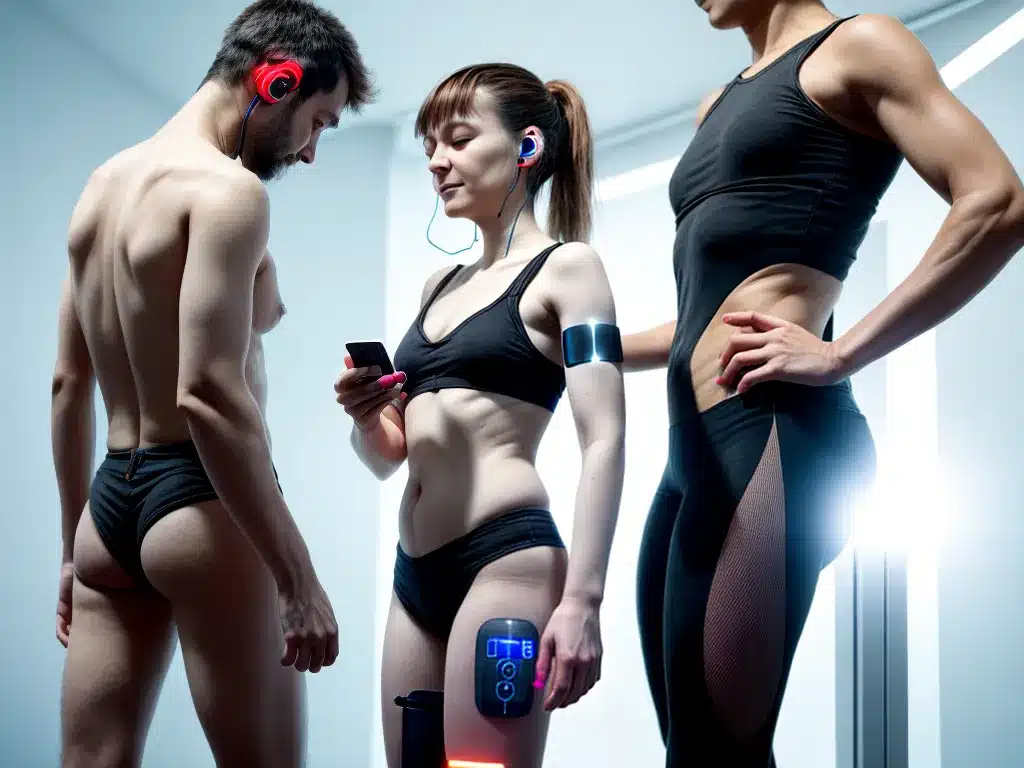
IoT Skin Sensors: On-Body Monitoring in 2024
Introduction
In 2024, Internet of Things (IoT) skin sensors will enable a new era of on-body health monitoring. These small, flexible, connected devices can be worn directly on the skin to continuously track vital signs and biomarkers. As healthcare becomes more focused on preventive care and early intervention, IoT skin sensors have the potential to transform medicine.
In this article, I will provide an extensive look at the emerging role of IoT skin sensors in healthcare. Key topics will include:
Applications of IoT Skin Sensors
Vital Sign Monitoring
IoT skin sensors can continuously monitor vital signs like heart rate, respiratory rate, blood oxygen levels, and skin temperature. This gives doctors live data on a patient’s overall health and wellbeing. Sensors can detect early warning signs of illness or distress.
For example, cardiac skin sensors placed on the chest can monitor heart rate variability as a predictor of impending heart failure or stress. Respiratory skin sensors on the neck can track respiration rate and irregular breathing patterns indicating illnesses like sleep apnea.
Chronic Disease Management
IoT skin sensors are highly valuable for managing chronic diseases like diabetes and hypertension.
Glucose monitoring skin sensors can scan glucose levels seamlessly without needle pricks. This helps diabetics better control their blood sugar.
Blood pressure skin sensors on the wrist provide easy, comfortable tracking of hypertension. Patients get real-time feedback to manage their condition.
Athlete Performance Monitoring
Skin sensors are ideal for tracking the vitals and biometrics of athletes during training and competition.
Electrolyte skin sensors can monitor dehydration and nutritional deficiencies. Lactate skin sensors can track muscle fatigue. With this data, trainers can optimize workouts and diet for peak performance.
Neonatal Monitoring
For newborn babies in the NICU, skin sensors offer continuous monitoring without restrictive wires.
Temperature skin sensors can indicate early onsets of infection. Respiration skin sensors on the abdomen look for signs of breathing issues. This improves health outcomes in vulnerable babies.
Design and Functionality of Skin Sensors
Flexible, Wearable Build
IoT skin sensors have an ultrathin, flexible build that conforms seamlessly to the skin. The stretchable nature allows freedom of movement without discomfort. The sensors stick directly onto the skin similar to a temporary tattoo.
Advancements like nanotechnology and microfluidics allow for this minimalist, wearable design. Sensors can pack advanced functionality in a small footprint.
Connectivity and Data Transfer
Skin sensors contain integrated circuits to process data. Bluetooth connectivity enables secure wireless data transfer to cloud servers and devices like smartphones.
Some sensors contain NFC chips. Tapping the sensor with an NFC-enabled smartphone instantly transfers the data for analysis. This makes data acquisition easy non-invasive.
Machine Learning Capabilities
Many skin sensors leverage machine learning algorithms to provide smart analytics. The sensors can analyze patterns in the vital sign data to provide clinical insights.
For instance, cardiac sensors can use ML to identify potential arrhythmias and detect heart failure risk early. This allows preventive action before any adverse episode.
Key Players and Latest Innovations
MC10
MC10 produces the BioStamp nPoint line of multi-parameter skin sensors. These stick-on sensors simultaneously measure ECG, heart rate, respiration, skin temperature, body posture, and activity levels.
The BioStamp sensors use machine learning to detect emerging health threats based on vital sign correlations. These disposable sensors last up to 72 hours.
VivaLNK
VivaLNK specializes in medical-grade wearable sensors. Their Vital Scout platform consists of a reusable ECG sensor worn on the chest. It tracks 20 different data streams including heart rate, HRV, respiration, sleep staging, stress levels, and posture.
The Vital Scout uses a rotating sensor suite for thermal and impedance monitoring. This reduces skin irritation from continuous use. The sensor has up to 5 days of battery life.
MC10
Philips
Philips has an FDA-approved neonatal health monitoring system called IntelliVue Guardian. Skin sensors called Smart ECG electrode patches connect to the monitor for continuous respiration and temperature monitoring of high-risk infants.
This platform uses early warning scoring algorithms to detect signs of health deterioration, allowing timely interventions.
Challenges for Adoption
While promising, some key challenges remain for mainstream adoption of IoT skin sensors.
-
User comfort – Sensors must avoid irritation and stay robustly adhered for consistent data collection.
-
Interoperability – There is a lack of standardization currently. Results need better integration into electronic health records.
-
Data privacy – Strict protocols are needed to keep the biometric data secure and compliant with regulations.
-
Reimbursement – Insurance coverage and payment models need to evolve to cover preventive digital health technologies.
The Future of On-Body Monitoring
IoT skin sensors represent just the beginning of advanced on-body monitoring. With further development, skin sensors may be able to capture multi-parameter data as efficiently as invasive lab tests.
Future skin sensors will incorporate sweat analysis, detecting biomarkers for a wide range of conditions and diseases. Sensors with closed-loop drug delivery systems could provide automated dosing of medications.
With their preventive care capabilities, wearable skin sensors will likely become integral for protecting health and catching disease early. This technology highlights the growing role of smart devices in digitizing healthcare.












